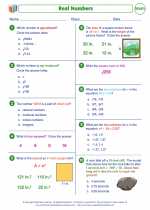Graphing Study Guide
Introduction to Graphing
Graphing is a fundamental concept in mathematics that allows us to visually represent and analyze data, functions, and relationships between variables. In this study guide, we will explore the basics of graphing, including plotting points, graphing linear equations, and interpreting graphs.
Plotting Points
When graphing, we often start by plotting points on a coordinate plane. The coordinate plane consists of two perpendicular number lines, called the x-axis and y-axis. The point where the x-axis and y-axis intersect is called the origin, and is typically denoted as (0, 0).
To plot a point, we use an ordered pair (x, y), where x represents the horizontal position on the x-axis and y represents the vertical position on the y-axis. For example, to plot the point (2, 3), we move 2 units to the right along the x-axis and 3 units up along the y-axis, and then mark the point where these two movements intersect.
Graphing Linear Equations
A linear equation is an equation that represents a straight line on a graph. The standard form of a linear equation is y = mx + b, where m represents the slope of the line and b represents the y-intercept (the point where the line crosses the y-axis).
To graph a linear equation, we can use the y-intercept to plot the first point on the graph, and then use the slope to find additional points. The slope m represents the change in y divided by the change in x, so if m = 2/3, for example, we would move 2 units up and 3 units to the right to find the next point on the line.
Interpreting Graphs
Once a graph is created, we can interpret the information it presents. We can analyze the slope of a line to understand the rate of change, identify key points such as intercepts and turning points, and compare multiple graphs to analyze relationships between different variables.
Practice Problems
- Plot the points (1, 2), (3, 4), and (5, 6) on a coordinate plane.
- Graph the equation y = 2x - 3.
- Interpret the graph of y = 3x + 2 in terms of its slope and y-intercept.
By mastering the concepts of plotting points, graphing linear equations, and interpreting graphs, you will develop a strong foundation in graphing that will be essential for further studies in algebra, geometry, and beyond.
[Graphing] Related Worksheets and Study Guides:
.◂Math Worksheets and Study Guides Eighth Grade. Real numbers
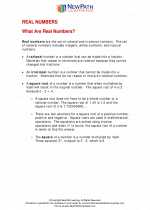
 Worksheet/Answer key
Worksheet/Answer key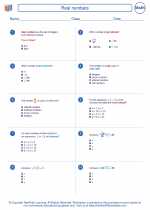
 Worksheet/Answer key
Worksheet/Answer key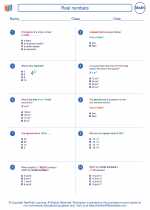
 Worksheet/Answer key
Worksheet/Answer key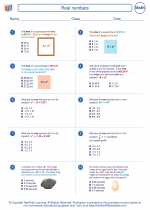
 Worksheet/Answer key
Worksheet/Answer key